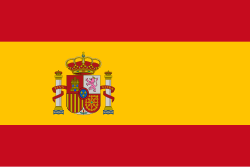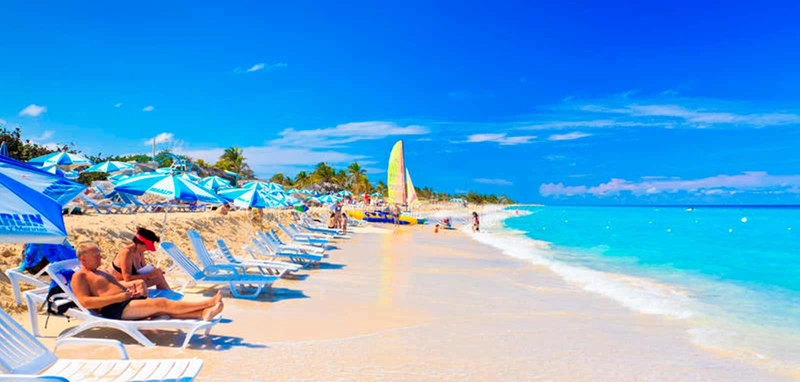The Donald Trump administration is pursuing an outdated policy against Cuba with its 243 measures that also affect tourism. The Caribbean nation’s leading industry, as well as other spheres of the economy of the largest of the Antilles.
The businessman president is ill-advised on the policy toward Havana, because if he analyzes it closely. It has been applied for more than 60 years without the expected result of destroying the political system, which seeks to build a socialist project.
What if Trump were told, or if he analyzed the situation more closely, that the worst thing he could do to Cuba is to end the economic, financial, and commercial blockade? Yes, because the blockade has been used by some officials and business leaders to justify the inefficiency of sectors that have been ineffective for more than 10 years, and the sugar industry is the best example.
But today I’ll only talk about the so-called industry without chimneys.
Tour operators, travel agents, and travel professionals agree today that Cuba faces a great challenge to recover this important sector. This is due to the hopes placed on tourism as the much-discussed engine of the island’s economy, which faces significant barriers.
Prensa Latina, CNA, and the newspaper Granma rely on recent reports from the National Office of Statistics and Information (ONEI).
ONEI reports indicate that tourism in Cuba fell 25 percent at the end of the first half of the year, when the country received 981,856 visitors from January to June. This figure represents 327,799 fewer than the same period last year, as reported by Cubasí, for example. Canada remains the main source market, with 428,125 travelers. Although the number is only 75 percent of what was recorded in 2023.
The decline affects almost all countries of origin: Russia, Germany, France, and Spain reported decreases of 56.5 percent, 64.1 percent, 73.6 percent, and 73.8 percent, respectively.
The United States also experienced a decline of 80.6 percent, while the Cuban community abroad reduced its visits by 77.6 percent, with 120,423 travelers. In June alone, Cuba received 119,513 tourists.
Colombia was the only exception, with a slight increase of 2.4 percent, equivalent to 388 additional travelers. Mexico and Argentina showed lower figures, with 26,702 and 23,862 tourists. Representing 87.6 percent and 92.9 percent of the previous year’s figures.
During a visit to Colombia, Tourism Minister Juan Carlos García highlighted the need to boost connectivity in the region to revive the sector. His trip was part of a government strategy to revitalize tourism, which has been affected by the economic crisis.
Granda stated that Cuba seeks to strengthen traditional markets such as Colombia, Mexico, and Brazil, while exploring opportunities in Asia and the Middle East.
This indicates that despite the low figures and the challenges facing tourism recovery, industry executives and employees are maintaining a strong effort to promote tourism. With robust promotional campaigns around the world and highlighting important events in the country, capable of attracting the attention of tour operators and travel agents.
Tourism is key to the Cuban economy, contributing to the gross domestic product (GDP) and generating foreign currency. Surpassed only by professional services and remittances.
In 2022, Cuba welcomed 1.6 million tourists, a figure that increased to 2.4 million in 2023. But in 2024 the number dropped to 2.2 million, according to official data.
The country received an annual average of more than four million visitors and was very close to reaching its record of five million, a goal it has not lost sight of.
Therefore, optimism characterizes all the plans and efforts on the island to address the major obstacles ahead, according to the top executives surveyed.
Cuba’s tourism abroad
The opposite is happening, like a strange paradox. Cuban tourists no longer want to go to Varadero, but rather to Punta Cana, Dominican Republic, and the figures exemplify this: during the first half of 2025, 43,218 islanders visited the Dominican Republic as tourists, according to official figures from the Dominican Ministry of Tourism.
In June 2025 alone, 19,542 Cubans traveled from the archipelago, setting a record for that month.
Punta Cana leads the list of preferred destinations, followed by La Romana and Puerto Plata. These areas combine paradisiacal beaches, all-inclusive infrastructure, proximity, and visa facilities, specifically designed for Cuban citizens.
The primary purpose of most of these trips has been to reunite with friends and relatives living in the U.S. Cubans living on the island have used destinations like Punta Cana to reconnect with their loved ones, taking advantage of the Dominican Republic’s proximity, visa facilities, and tourism infrastructure after years of separation.
This phenomenon occurs while tourism to Cuba is declining. The decline is essentially due to Washington’s aggressive policy of banning businesspeople and their families from entering the United States who invest in the leisure industry, as well as airlines and transatlantic tourism.
Cuba remains a no-go destination for U.S. citizens who want to experience and enjoy the culture, cuisine, art, history, and fine-sand beaches and crystal-clear waters.
- Friendship is a soul that inhabits two bodies - 8 de December de 2025
- To capture the most beautiful even when we talk about pain - 30 de November de 2025
- When Life Only Asks You to Be Happy - 25 de November de 2025

